Getting to F1 is a dream for every aspiring go-kart racer, and those that end up taking part in a Grand Prix are part of an elite. What is less perceived is that, also for the teams, getting to the top category in motorsports is a huge challenge, and even as backmarkers often receive a lot of criticism for its lack of speed, even making to the grid is a major accomplishment, considering how many teams have failed to bring the action to the racetrack. On the other hand, large carmakers can often give themselves the right to build a car that will never ever actually race. In this top 10, we will explore cars that were built to F1 regulations (or almost) but have never been raced in an official F1 Grand Prix:
1995 – Lola T95/30 Ford
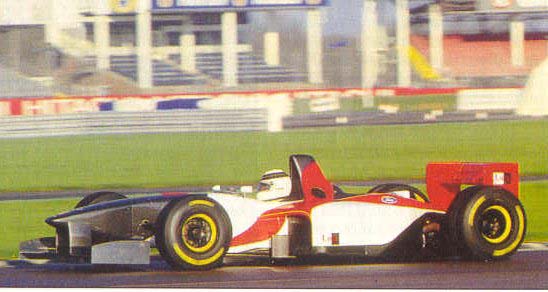
After the failure that was the T93/30, a car that even with Ferrari engines sealed the hopes of Scuderia Italia in F1, for 1994 Lola Cars decided to build a mule to test technical solutions while seeking sponsorship to return to F1 as a team on its on. The car was developed from a 40% wind tunnel model, and equipped with a Cosworth ED V8 engine, by the option of choice for small teams, due to its low price and easy installation. Trial runs were conducted by Scotsman Allan McNish between 1994 and 1995. The T95/30 most distinctive feature was the absence of an airbox over the drivers head, which was common sense in F1 by that time. Even with that much training, the car never took part in any race, and ended being sold to a collector in 1997.
1996 – DAMS GD-01 Ford
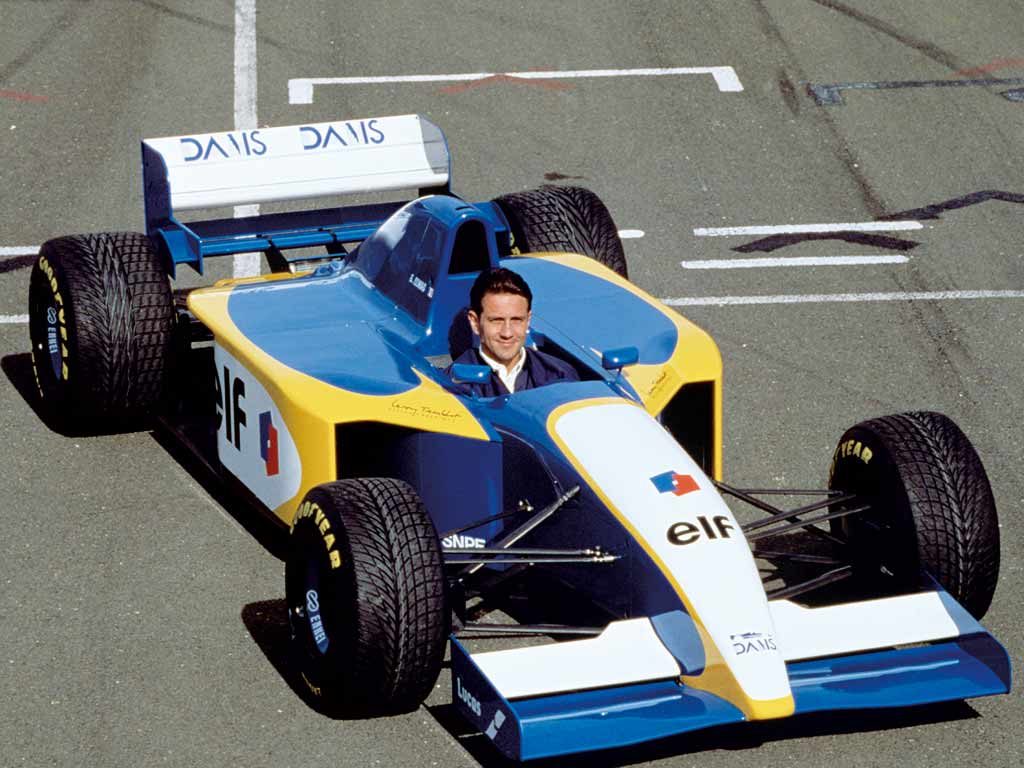
Founded in 1988 by ex-F1 driver René Arnoux and Frenchman Jean-Paul Driot, DAMS soon became one of the major forces in F3000, crowning the champion drivers in 1990, 1993 and 1994. Driot wished to ascend to the top tier category like other F3000 and F2 squads had done in the past, and for that he established a partnership with British race car constructors Reynard, to develop DAMS’s F1 single seater. Car building started in 1994, however the pace was slow due to a lack of sponsorship. The cars design was somewhat bulkier than contemporary single seaters, with large side air intakes for the oil and water radiators that cooled down the Cosworth ED V8 engine. The car was even tested by Érik Commas and Jan Lammers in Paul Ricard, but that only showed that a lot of work had to be done if the team wished to stay within the 107% qualifying rule required for a car to take part in a Grand Prix. The team had a hard time finding sponsors to keep development on going, with DAMS missing the deadline to enter seasons 1995 to 1997. The rule changes put in place in 1998 meant the car was now outdated even before it competed, with the single car built now resting in DAMS headquarters nearby Le Mans.
1996 – Dome F105 Mugen
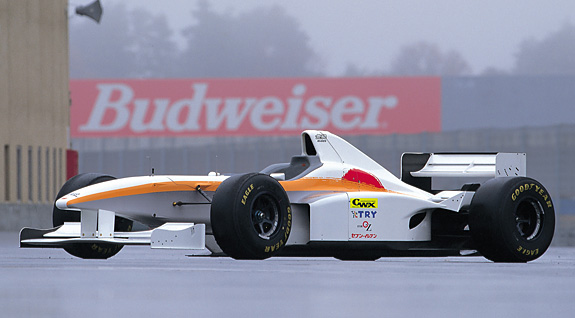
Founded in 1975, Dome is a famous Japanese race team and racecar constructor. With lots of experience building F3 and F3000 single seaters, the Japanese decided to step ahead in 1995 and develop a F1 car. This same year they hired former Minardi F1 team chief Tadashi Sasaki, that was able to bring not only his know how but also Minardi’s transmission and hydraulics to the project. Managed by Akiyoshi Oku (responsible for Dome’s successful F3000 car, the F104), development work started summer 1995. Due to its partnership with Mugen in Japanese F3000, Dome was able to secure a Mugen MF301 V10 engine similar to those used by Ligier that same year. During 1996 various training sessions were conducted on a vast array of tracks, and right after the season finale of 1996 Dome’s test driver, Naoki Hattori, managed a time of 1″46.270, circa 7 seconds slower than Jacques Villeneuve pole of 1″38.909 established a few days earlier at the Japanese Grand Prix. This time was only 0.3 seconds of the 107% line, and probably a most skilled driver would get an even better time. Eventually, Dome’s efforts to establish itself in F1 vanquished due to a lack of sponsorship, and the car now remains in exposition in Dome’s headquarters.
1999 – Honda RA099

Having last competed as a works team in the 60’s, Honda was preparing to return to F1 as a full constructor in the dawn of the millennium. For that, the Japanese carmaker hired British racecar engineer Harvey Postlethwaite (ex Ferrari and Tyrrell), with the car being built by italian specialist Dallara. Testing was conducted in Jerez by Dutchman Jos Verstappen, who achieved promising lap times, comparable to midfield teams. However, the sudden death of Postlethwaite of a heart attack during one of the training sessions made Honda abandon the project. Eventually, Honda would return as a constructor in 2006, after buying British race team BAR.
2001 – Toyota TF101
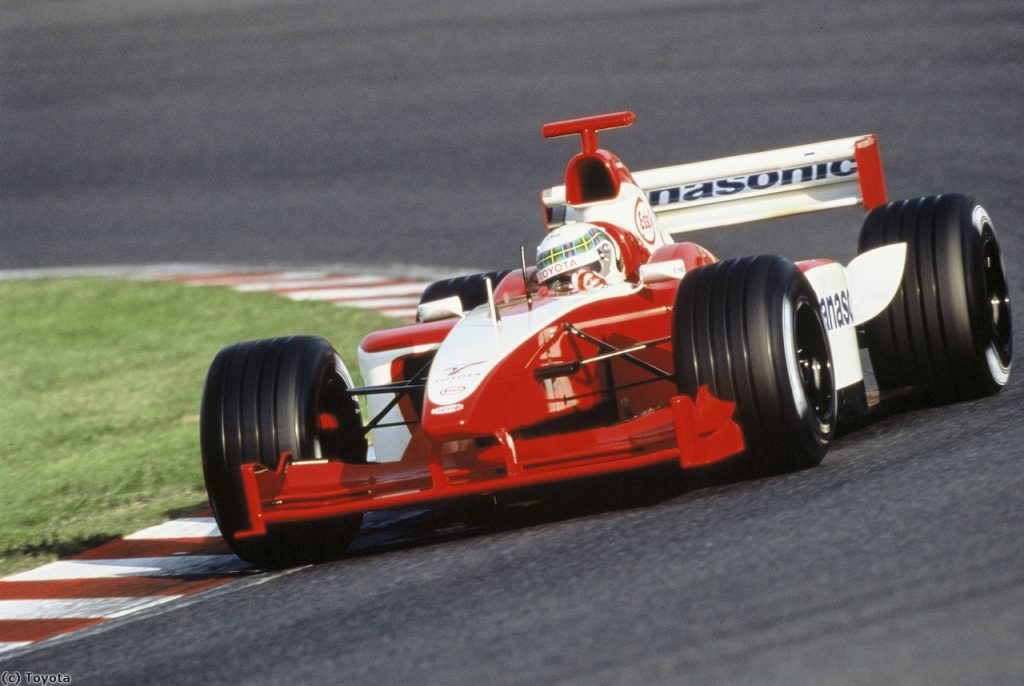
After barely missing the top spot in the 1999 Le Mans 24 Hours, Toyota choose instead to focus on F1. Planning to join the world circus in 2002, the Japanese car maker developed the TF101 to serve as a test mule in 2001. By the hands of Finnish Mika Salo and Allan McNish, the car amassed 3.000 test laps (equivalent to 22.967 km) in 11 of the tracks that were part of the World Championship. Developed initially by André de Cortanze, latter development was led by Gustav Brunner, eventually leading to the TF102 model that ran in the 2002 F1 season.
2003 – AGS SH03 Cosworth
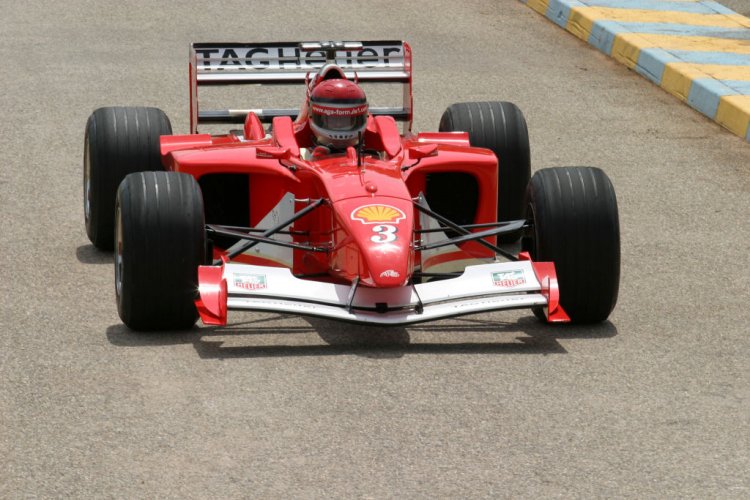
After leaving F1 in 1991, French racing team AGS focused on offering driving courses for high performance cars, including their old F1 cars. As time passed by, however, the cars began to become outdated face new competitors, as well as hard and expensive to maintain. With the know how obtained from years of driving courses, the French decided to build a new single seater that would fit then current F1 regulations, in a development process that went from 2001 to 2003. With only 520 kg, the car was equipped with a Cosworth DFR-S V8 3.5 liter engine, with 650 HP @ 11.500 rpm. Five cars were built, 2 of them as two-seaters and 3 single seaters, that have been used, since then, for training lessons in race tracks like Paul Ricard.
2003 – McLaren MP4/18 Mercedes-Benz
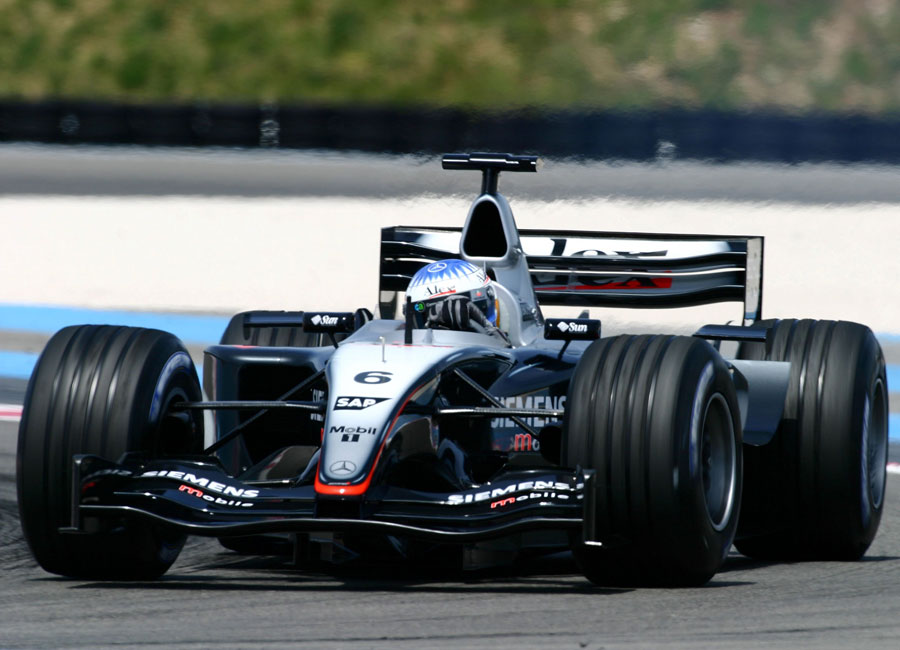
After a frustrating season in 2002, when Ferrari completely dominated the championship, Adrian Newey started to work on a car that would represent not an evolution, but a revolution for McLaren. Created with a very tight packaging to improve aero efficiency, the car ended showing sort of weak, first failing twice at the mandatory crash tests, and later by showing a series of cooling issues due to the reduced area left for the radiators. Meanwhile, the D spec MP4/17 showed competitive in 2003, which led McLaren to give up the new concept for that season, Eventually the MP4/18 evolved to the MP4/19 that the British race team raced in 2004.
2006 – Honda RA106 “Bonneville 400”
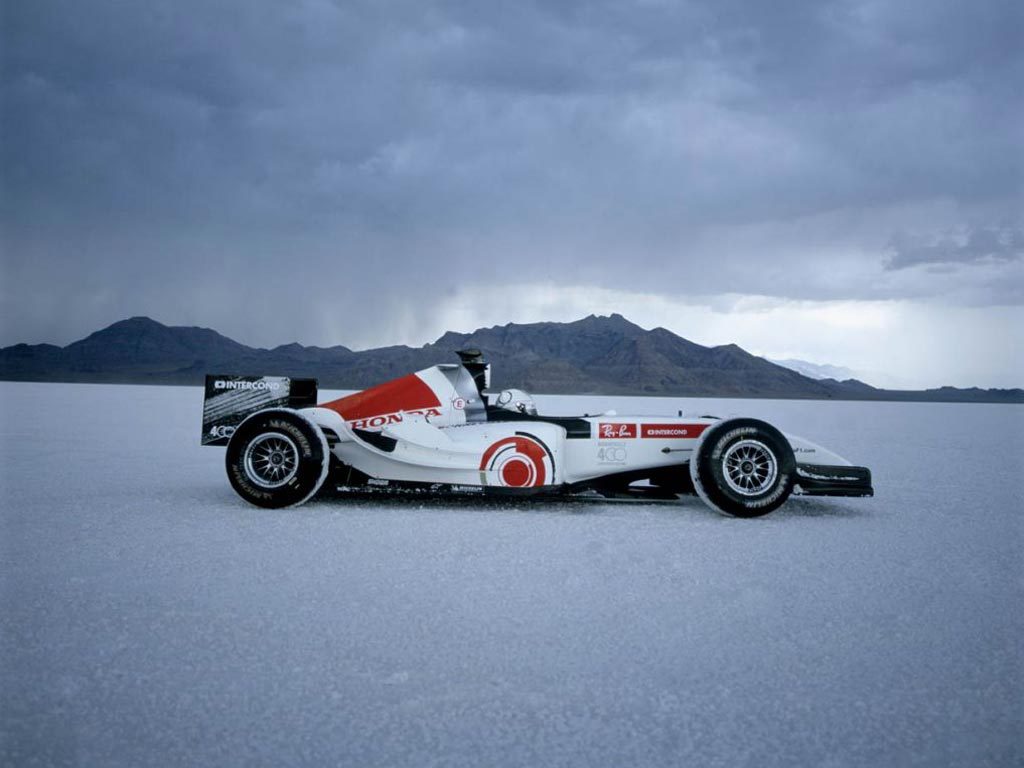
When Honda returned to F1 as a works team, the Japanese were not satisfied with the marketing return on media. Even after showing really good pace, with a fourth place in the constructors championship, Honda’s marketing team came up with a innovative way to capture the media. In July 2006, the official F1 team moved to the Bonneville Salt Flats to participate in that years Speed Week. The car was the same used during that season, and totally within the regulations, however the rear wing was replaced by a fin to reduce drag and improve high speed stability. Also a para-chute was added to help stop the car in the low grip salt flats. Aiming a top speed of 400 kph, the team tested all week to find the optimal set-up, however the highest average from two runs at the launched kilometer tipped at 397.481 kph. Even if they didn’t achieve the ultimate goal of 400 kph, the RA106 is, to this date, the F1 car to reach the highest ever top speed.
2010 – Toyota TF110
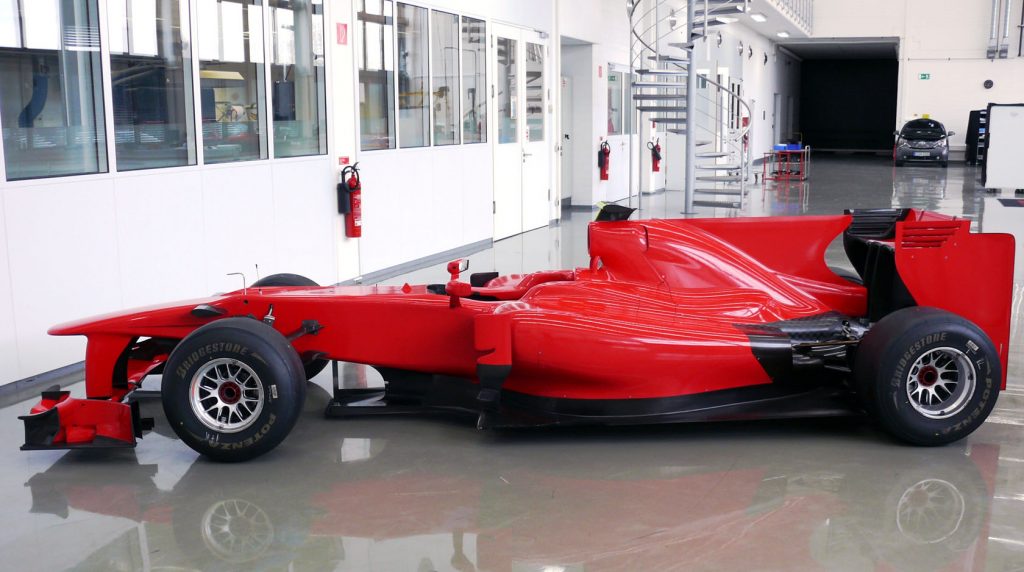
Planned to compete in the 2010 F1 season, the TF110 was developed and tow cars were even built, however with Toyota withdrawing the competition after the 2009 financial crisis the cars were never raced. Serbian Zoran Stefanvić even tried to use the car in hi failed attempt to join the 2010 F1 World Championship, presenting the renamed chassis as the Stefan S-01 and painted n traditional Serbian red. The FIA, however, denied the team a spot on the entry list. By the end of 2010, Spanish outfit Hispania tried to get a deal with Toyota to use the car for the 2011 F1 season after breaking up with Dallara. The car was also considered as a test car for the Pirelli tire compounds in the company’s return to F1 in 2011. None of these plans fructified, and the only track the car saw was a shakedown at the hands of Kazuki Nakajima in Toyota Racing headquarters in Cologne, Germany.
2010 – Lotus Exos T125 Cosworth

Since 2005, Ferrari has earned a lot of money with its XX Corsa Clienti, a program which consists of ultra high performance car available to extremely rich clients to race with support from the factory. Other makers saw this niche, with Lotus presenting its view on the subject in 2010. Called the T125, the car had the goal to make a F1 level car available to 25 luck clients that wished to invest around US$ 1 million on the racecar. Equipped with a 3.5 liter Cosworth V8 engine, the car has 650 HP @ 10.800 rpm, enough to drive the 656 kg of the car to performance levels similar of F1 cars from the same time (as a comparison, the T125 lapped the Top Gear test track at 1″03.8, against a 0″59 clocked by a Renault R24 V10 from 2004, a car with circa 150 HP more than the Lotus car). In addition to the car, buyers would have access to the Exos Experience, a private club that would held various races for the T125 owners, and track support from Lotus Motorsports. The owner would also receive training from professional race drivers to improve their performance on track. Since then, Rodin Cars from New Zealand has acquired the rights to produce the T125 from Lotus, now selling the car as the Rodin FZED


Encontrei boas postagens aqui. Eu gosto do seu post. Tão perfeito!